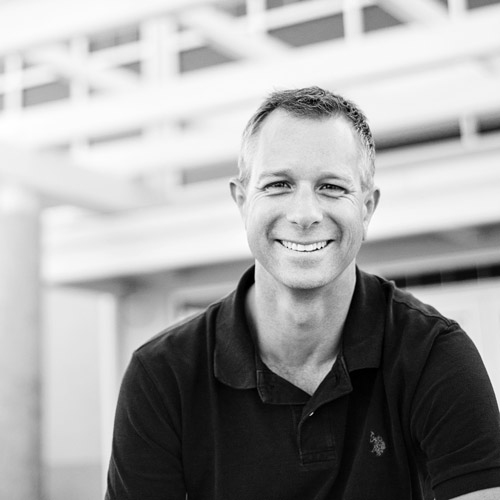As chief transformation officer at BMO Financial Group, Lynn Roger strives to improve the ways that business is organized and problems are solved.
For Roger and BMO, this goes far beyond motivational posters, new furniture, or renaming departments. She’s testing processes that will become the future of BMO—Canada’s first bank to enter its bicentennial year and an institution that is competing with the new industry players that are often able to move much faster than traditional companies.
As the former chief talent officer, Roger knows that major structural change requires innovation on a personal level. For BMO, understanding employees is inextricable from understanding clients. Their transformation, she says, is a human-centered one.
“It’s all about people,” Roger emphasizes. “Technology is an enabler. It’s important to remember that there’s a human at the end of that technology solution. It’s all about that side of the transformation.”
This relates to the contradiction that’s inherent in what people expect from a bank today. On one hand, people want an increasing number of mobile services completed quickly and without a trip to a bank branch. On the other hand, people want to feel that they matter when they need services that do require human connection.
Read more of Profile’s Top 50 articles.
While innovation has allowed BMO to introduce new initiatives such as mobile account opening, Roger also emphasizes that its collective ambition is to keep customers at the center of everything the company does. “Whatever we do, whatever we build, whatever we design, it’s all done with the customer and how it helps the customer, in mind,” she says.
Now, Roger brings that creative vision for shaping career paths to innovating across the company. As someone who has mentored and guided hundreds of leaders in her company, she encourages people to seek diverse career paths. While some people Roger has advised feared taking on unexpected new roles, she extolled the value of rich, useful expertise that varied experience offers. To that end, her office is now experimenting with building multidisciplinary teams that can tackle new challenges much more effectively than a traditional siloed company.
“Perspective and diversity of thought are so important, not just for personal development, but also for bringing better customer solutions,” Roger explains.
Of course, taking on a new and unexpected role presents its share of risks, but Roger serves as a model for the benefits of potential hazards. In her thirty-seven years at BMO, she’s taken on challenging new roles, including her move into human resources and her most recent shift to the Office of Transformation, which she describes as the biggest risk of her career.
“That was probably the most daunting assignment I’ve ever been given,” she admits. For starters, the role didn’t exist before she took it. There was no playbook or set of defined processes for what the chief transformation officer would do. And, in order to be agile, Roger’s new team was much smaller than the 150-person team she led in human resources. That smaller team brings quite a diverse set of experiences and relevant skill sets to bear on their new challenges—and they’re already making an impact in dramatic ways.
“It’s actually quite an eye-opener,” Roger says. “They bring the full wisdom of all their experience to bear to solve a problem. It’s an interesting dynamic when you have leaders that come from so many different perspectives, different lines of business, different experiences. The richness of the solutions is quite amazing.”
While Roger acknowledges specialization has its value, she also expresses that busting functional and business silo behaviors are the key to changing the way the company works. BMO has adopted some agile principles in order to move as quickly as potential competitors. If BMO had tackled mobile account opening in a typical fashion, the process would have taken significantly longer than the rapid approach it took. Now that it has found success with delivering individual projects quickly using multidisciplinary colocated teams, it’s working on scaling that model for the company.
Roger’s innovative, people-centered approach goes back to her days in talent management, and she describes collaboration and cocreation as two of the major principles she brought with her to build the Office of Transformation. When she was chief talent officer, she crowdsourced a revitalization of BMO’s values and behaviors with employees from every level, geography, and business area—an unusual move for a traditional company, but not for Roger and BMO.
“We want to bring our brand to life in dynamic ways,” she explains. “We could have chosen to put ten smart people in a room to come up with a list of our values, our behaviors, and how we aspire to treat each other, and that would have been fine—but that would have been a poster on the wall. By crowdsourcing our values with our employees, we made it ours. Everyone feels ownership. You have the fingerprints of our employees all over this, and it has really started to be embedded in everything we do and how we work.”
And collaboration isn’t always easy to spark. One of Roger’s team members is dedicated to transforming physical space, which she stresses is no mere superficial change. “When you ask what’s standing in the way of collaboration in the workplace, it starts with people. It’s about literally and figuratively breaking down the walls that stand between leaders, teams, and ideas,” she says. “Changing the work environment is not about changing the furniture. This is not a real estate play. It’s about bringing people, technology, and real estate together.”
As someone who helps to shape career paths and influences future leaders, Roger stresses that a career is a journey and not a race to the finish. “I think the greatest growth comes from having different perspectives. Sometimes we think we know exactly what we want to do in our career, and as a result, we are not open-minded when it comes to opportunities outside of our current thinking,” she says. “No matter how great you are at doing what you do, no matter how much you love it, getting a different perspective will stretch you in ways you can’t even imagine and open doors you never even thought of. I’ve taken risk in many of the roles throughout my career. It can be hard, but it’s totally worth it. It’s offered so many rewarding experiences and pushed me to keep learning and reinventing myself.”

